Real vs. Fake: Kobe Bryant x Nike Air Force 1 Low Retro QS “Varsity Maize and Varsity Purple” Authentication Guide
How to distinguish an original Kobe Air Force 1 from its replica, according to SNKRDUNK's professional authenticators.
Kobe Bryant, who played for the NBA’s Los Angeles Lakers and tragically passed away at the age of 41 in a helicopter crash in 2020, continues to have his signature models released posthumously.
These releases consistently sell out immediately upon launch due to their immense popularity. However, this popularity has led to a significant presence of counterfeit products in the secondary market, making authentication crucial for buyers.
This article focuses on the Kobe Bryant x Nike Air Force 1 Low Retro QS “Varsity Maize and Varsity Purple” and examines how professional authenticators distinguish between genuine and fake versions. The authentication methods described here represent only a portion of the comprehensive verification process, but they do, nevertheless, serve as valuable reference points for those considering purchases in the secondary market.
About the Kobe Bryant x Nike Air Force 1 Low Retro QS “Varsity Maize and Varsity Purple”

Released in December 2024, this collaborative Air Force 1 between Kobe Bryant and Nike features the hallmark Lakers colorway of White, Varsity Maize, and Varsity Purple. The design incorporates meaningful details for Kobe fans, including the Sheath logo and jersey number embroidery on the heel area. Despite being released over a month ago, this model remains highly traded and popular among collectors.
Authentication Points
▪︎Outsole AIR Internal Structure (X-ray Analysis)
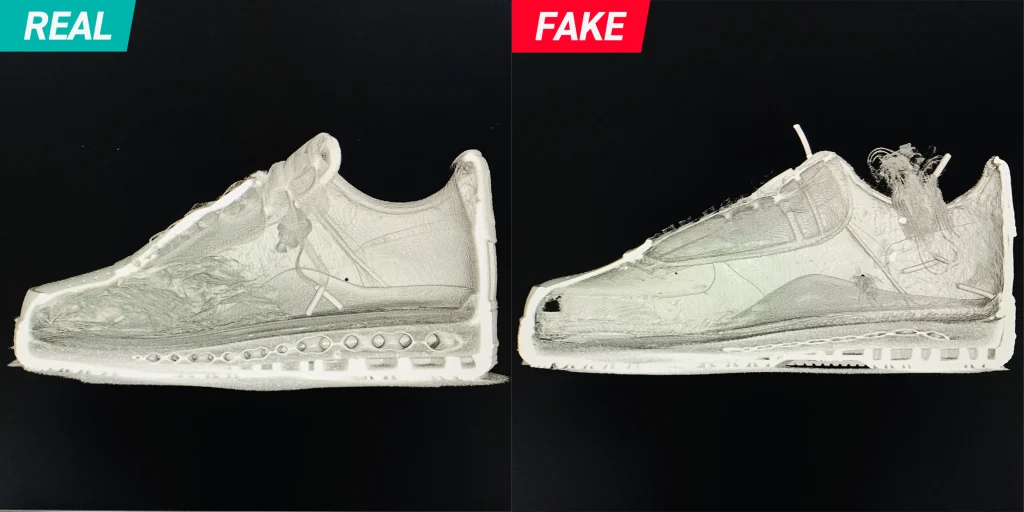
The first authentication method involves using X-ray technology to examine the internal AIR structure within the outsole. Comparison between authentic and counterfeit pairs reveals distinct differences in the AIR unit’s shape and configuration.
▪︎Tongue Logo UV Light Response
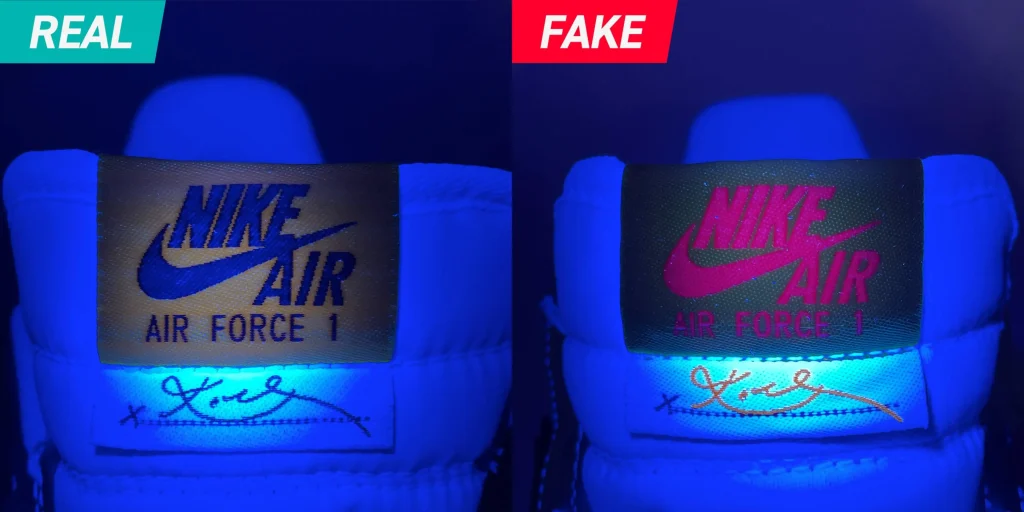
When examining the tongue logo under UV light, significant differences emerge in the stitching thread reactions. Authentic pairs show minimal to no reaction under UV light, while counterfeit versions display distinct color responses: the “NIKE AIR FORCE 1” text appears reddish, and Kobe’s signature glows gold under UV illumination.
▪︎Swoosh UV Reaction
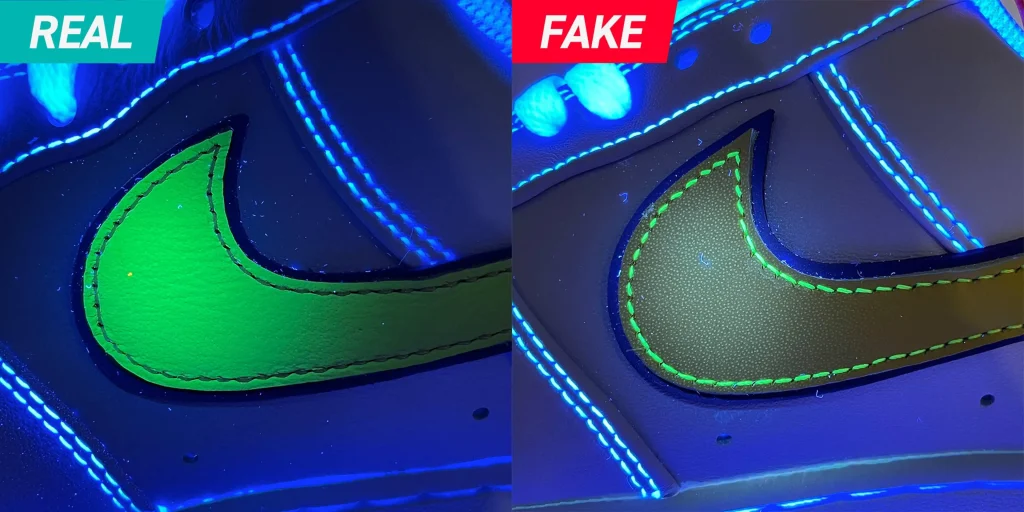
The Swoosh logo also reveals authentication clues under UV light examination. On authentic pairs, the leather material glows yellow while the stitching remains non-reactive. Conversely, fake pairs show the opposite pattern: the leather does not react to UV light, but the stitching illuminates yellow.
▪︎Lining Shape and Structure
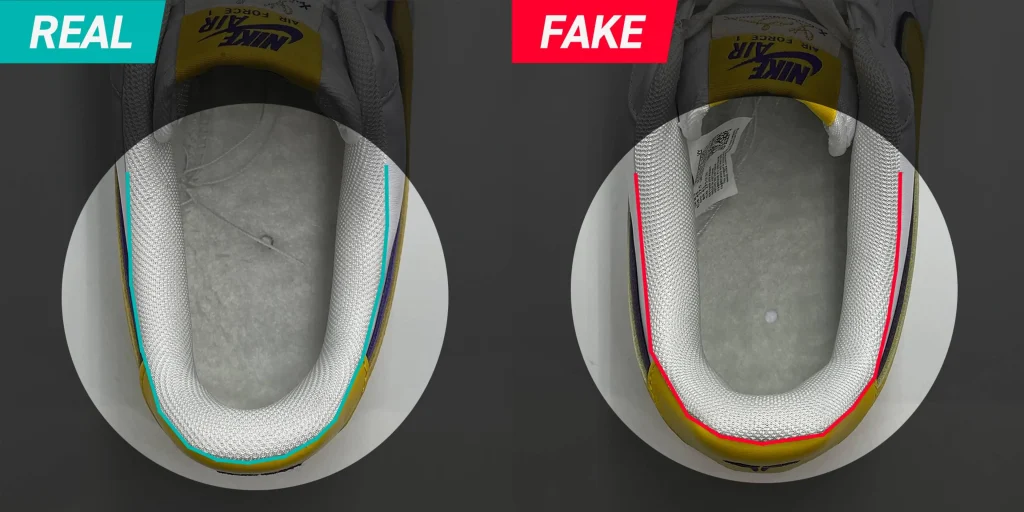
The shoe lining presents subtle but important differences in thickness and overall shape. Authentic pairs feature thinner lining with a more streamlined profile, while counterfeit versions typically have thicker lining with a broader, wider shape.
▪︎Insole Logo (IR Camera Analysis)
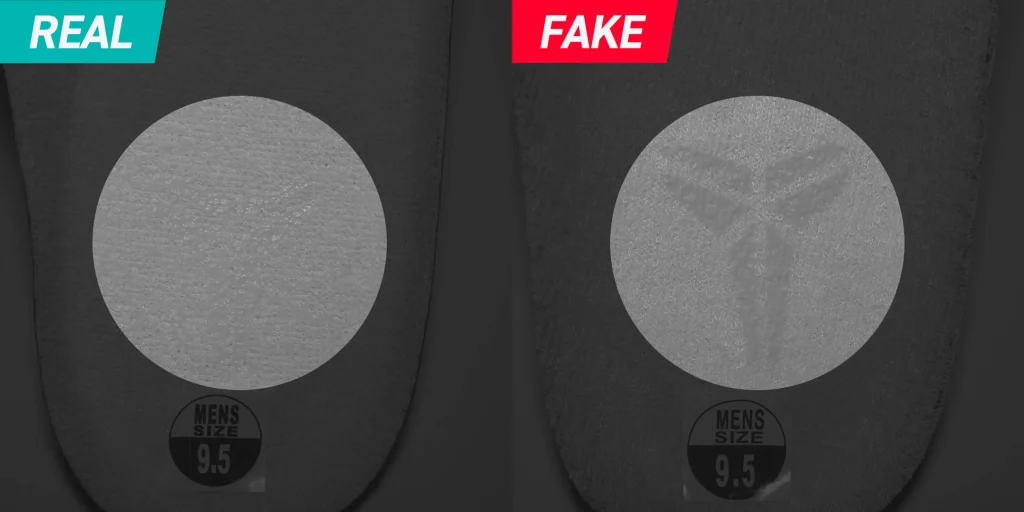
The final authentication point involves using infrared (IR) camera technology to examine the insole logo. Under IR analysis, authentic pairs show the logo as nearly invisible, while fake pairs display the logo with a slightly darker, more visible appearance.
Conclusion
The authentication points outlined above represent only a fraction of the comprehensive verification process used by professional authenticators. The manufacturing techniques for counterfeit sneakers continue to advance daily, making it increasingly difficult for non-experts to identify fakes through self-assessment methods.
Given the sophisticated nature of modern counterfeits, purchasing through platforms that employ professional authenticators with extremely high accuracy in genuine/fake verification is strongly recommended.
The key authentication technologies discussed include X-ray analysis, UV light testing, infrared camera examination, and detailed physical inspection of construction elements, all of which require specialized equipment and expertise to perform accurately.
What is SNKRDUNK Lab?
At SNKRDUNK Lab, we’re dedicated to combating the social and economic issues caused by counterfeit goods. We’re doing this by improving our authentication technology and raising public awareness about fakes.
By strengthening our partnerships with local and global experts and research institutions, we’re combining technology, data, and human expertise to set the new standard for authentication.
Our Main Activities
Investigating and Researching Counterfeit Goods
SNKRDUNK currently maintains an authentication accuracy rate of 99.97%. We will continue to conduct research and investigations, utilizing Japan’s largest database of counterfeit products to stay ahead of the curve.Improving Our Authentication Technology
By introducing and researching various tools, including X-ray, infrared, and microscopes, we are enhancing our technology to ensure we can authenticate every single item.Communicating for Public Awareness
We will regularly publish market reports based on our partnerships with external organizations and experts, as well as on insights and research findings gathered from the field.Read more about SNKRDUNK Lab here.
For the latest releases, breaking news, and exclusive interviews, stay tuned to the SNKRDUNK Magazine and @snkrdunk on Instagram. Explore the SNKRDUNK App and use the welcome code from the banner below before making your first purchase. Additionally, if you want to try a pair out, visit our stores in Singapore and Japan!
Alternatively, you can also head to the SNKRDUNK App via the banner below and browse the latest and greatest in sneakers, streetwear, and TCG.
Follow us on:
More SNKRDUNK Features:
Real vs. Fake: JUNYA WATANABE MAN x New Balance 1906L “Black” Authentication Guide
Real vs. Fake: Nike Kobe 6 Protro “Sail” Authentication Guide
Real vs. Fake: UNION x Air Jordan 1 Retro High OG NRG “Storm Blue/Varsity Red” Authentication Guide
Real vs. Fake: UNION x Air Jordan 1 Retro High OG “Chicago/Shadow” Authentication Guide
Real vs. Fake: New Balance 992 “Gray” Authentication Guide



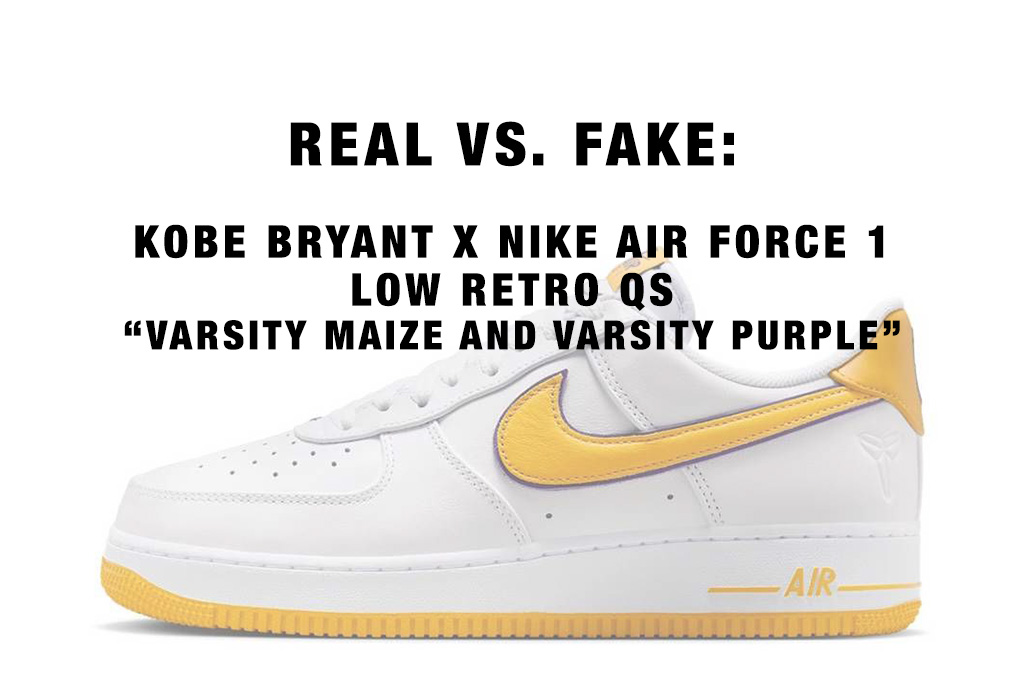

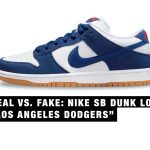
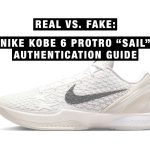
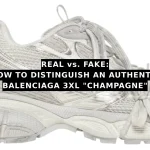
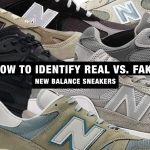
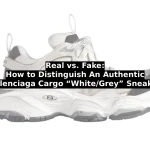
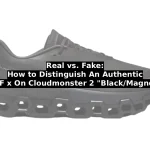
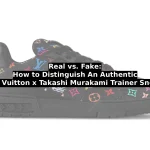

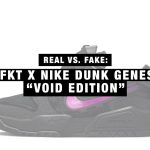
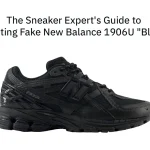


![Fragment x UNION x Nike Air Jordan 1 Retro High OG SP “Black/White” [Release Date/Price/Where To Buy]](https://snkrdunk.s3.ap-northeast-1.amazonaws.com/en/magazine/wp-content/uploads/2025/09/24105712/20250425044622-0.webp)
![Nike SB Dunk Low “Nardwuar” [Release Date/Price/Where To Buy]](https://snkrdunk.s3.ap-northeast-1.amazonaws.com/en/magazine/wp-content/uploads/2025/09/26154309/20250925091309-0.webp)
![Stussy × Wales Bonner Capsule Collection [Release Date/Price/Where To Buy]](https://snkrdunk.s3.ap-northeast-1.amazonaws.com/en/magazine/wp-content/uploads/2025/09/26153618/20250924012101-0-scaled.webp)
![TOGA × Asics Gel-Cumulus 16 TG 3colors [Release Date/Price/Where To Buy]](https://snkrdunk.s3.ap-northeast-1.amazonaws.com/en/magazine/wp-content/uploads/2025/09/26152854/20250926054732-0.webp)
![Travis Scott x fragment design x Nike Air Jordan 1 Low OG “Sail/Military Blue” [Release Date/Price/Where To Buy]](https://snkrdunk.s3.ap-northeast-1.amazonaws.com/en/magazine/wp-content/uploads/2025/09/24094429/20250921011101-0-scaled.webp)
![Kobe Bryant Forever × Nike Air Force 1 Low QS “Triple Black” [Release Date/Price/Where To Buy]](https://snkrdunk.s3.ap-northeast-1.amazonaws.com/en/magazine/wp-content/uploads/2025/09/24093408/20250923074425-0.webp)



